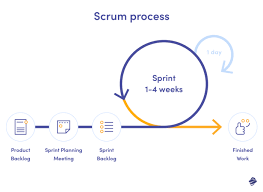The Evolution of Agile System Development and Spiral Models
Agile system development and spiral models are two popular methodologies used in software development. While they have distinct approaches, both methodologies aim to improve the efficiency and effectiveness of the development process.
Agile System Development
Agile system development is an iterative approach that focuses on delivering small, incremental releases of a product. This methodology emphasizes collaboration, flexibility, and customer feedback throughout the development process. Agile teams work in short cycles called sprints, where they prioritize tasks based on customer needs and feedback.
One of the key principles of agile system development is the ability to adapt to changing requirements and priorities. This flexibility allows teams to respond quickly to feedback and make adjustments as needed. By breaking down projects into smaller tasks, agile teams can deliver value to customers more frequently and efficiently.
Spiral Models
The spiral model is a risk-driven approach that combines elements of both waterfall and iterative methodologies. It consists of multiple iterations or spirals, each focusing on different aspects of the project such as planning, risk analysis, development, and testing. The spiral model allows for incremental releases while also addressing potential risks early in the development process.
One of the main advantages of the spiral model is its focus on risk management. By identifying and mitigating risks at each stage of the project, teams can reduce the likelihood of costly errors later on. The spiral model also allows for greater flexibility in accommodating changes as new information becomes available.
Conclusion
Both agile system development and spiral models offer unique approaches to software development that can help teams deliver high-quality products efficiently. While agile emphasizes adaptability and customer collaboration, the spiral model focuses on risk management and iterative refinement. By understanding the strengths of each methodology, teams can choose the approach that best suits their project requirements and goals.
Understanding Agile System Development and Spiral Models: Key Differences, Principles, and Advantages
- What is agile system development and how does it differ from traditional software development methodologies?
- How does the agile methodology promote collaboration and flexibility within development teams?
- What are the key principles of agile system development that contribute to its success?
- How does the spiral model address risk management in software development projects?
- What are the main advantages of using agile system development over traditional waterfall methodologies?
What is agile system development and how does it differ from traditional software development methodologies?
Agile system development is a modern approach to software development that emphasizes flexibility, collaboration, and customer feedback. Unlike traditional software development methodologies, such as the waterfall model, agile focuses on delivering small, incremental releases of a product through iterative cycles. This allows teams to adapt to changing requirements and priorities, respond quickly to feedback, and deliver value to customers more efficiently. Agile system development promotes a more dynamic and customer-centric approach compared to traditional methodologies, which often follow a linear and rigid process from planning to deployment.
How does the agile methodology promote collaboration and flexibility within development teams?
The agile methodology promotes collaboration and flexibility within development teams by emphasizing continuous communication and teamwork throughout the project lifecycle. Agile teams work in close collaboration with stakeholders, including customers, to gather feedback and incorporate changes quickly. This iterative approach allows team members to adapt to evolving requirements and priorities, fostering a sense of shared ownership and responsibility. By breaking down projects into smaller tasks and working in short cycles, agile teams can respond promptly to challenges and opportunities, enabling them to deliver high-quality products efficiently. The emphasis on collaboration and flexibility in the agile methodology helps create a dynamic and productive work environment where team members can leverage their diverse skills and expertise to achieve common goals effectively.
What are the key principles of agile system development that contribute to its success?
One frequently asked question regarding agile system development is about the key principles that contribute to its success. Agile system development is built on several core principles that play a crucial role in its effectiveness. These principles include customer collaboration, adaptability to change, iterative development, and delivering working software incrementally. By prioritizing customer feedback, embracing change, breaking down projects into manageable increments, and focusing on delivering value at each stage of development, agile methodologies foster a dynamic and responsive approach that leads to successful outcomes in software development projects.
How does the spiral model address risk management in software development projects?
The spiral model addresses risk management in software development projects by incorporating risk analysis as a fundamental component of each iteration or spiral. This iterative approach allows teams to identify potential risks early in the project and develop strategies to mitigate them. By focusing on risk management throughout the development process, the spiral model helps teams proactively address uncertainties, make informed decisions, and reduce the likelihood of costly errors. Additionally, the spiral model enables teams to adapt to changing requirements and priorities based on the insights gained from risk analysis, ultimately leading to more successful and efficient software development projects.
What are the main advantages of using agile system development over traditional waterfall methodologies?
When comparing agile system development to traditional waterfall methodologies, one of the main advantages of agile is its emphasis on adaptability and flexibility. Unlike the rigid and sequential nature of waterfall, agile allows for iterative development cycles that prioritize customer feedback and collaboration. This approach enables teams to respond quickly to changing requirements, deliver value incrementally, and make adjustments throughout the development process. By promoting a more dynamic and responsive way of working, agile system development can lead to faster delivery times, improved stakeholder engagement, and ultimately, a higher likelihood of project success.




